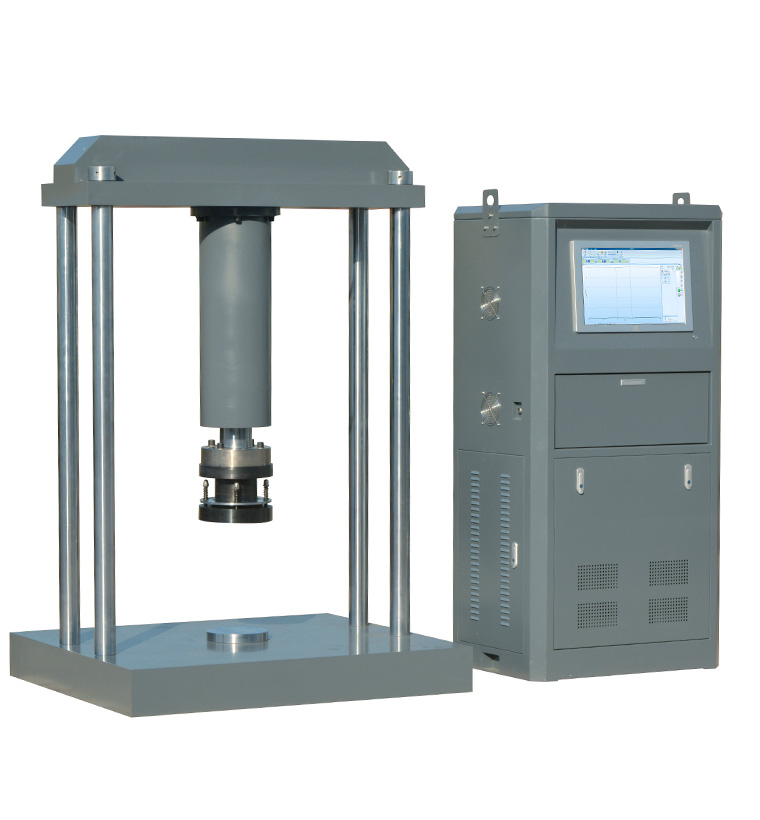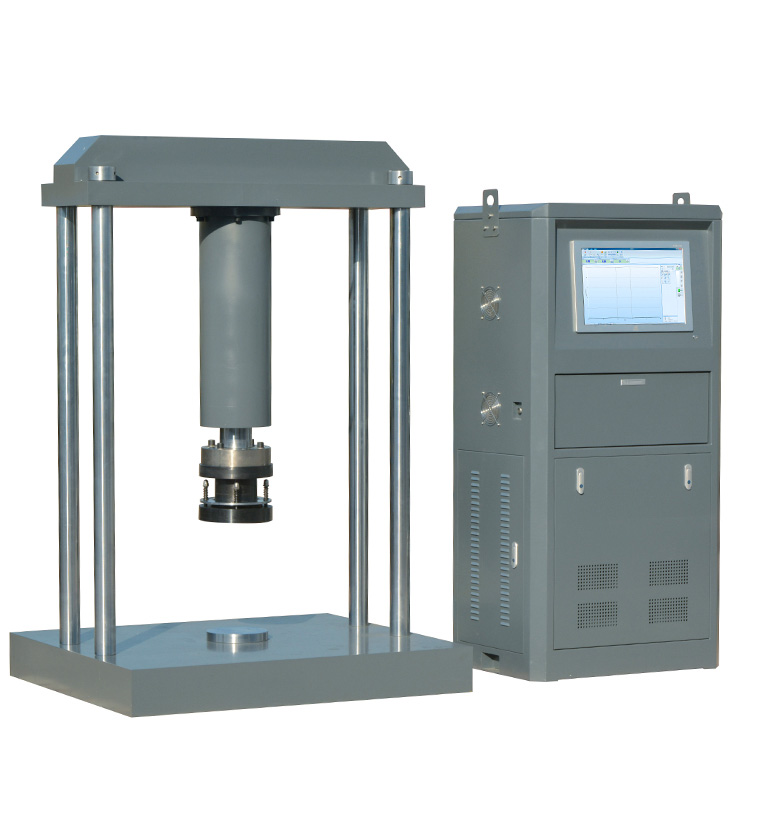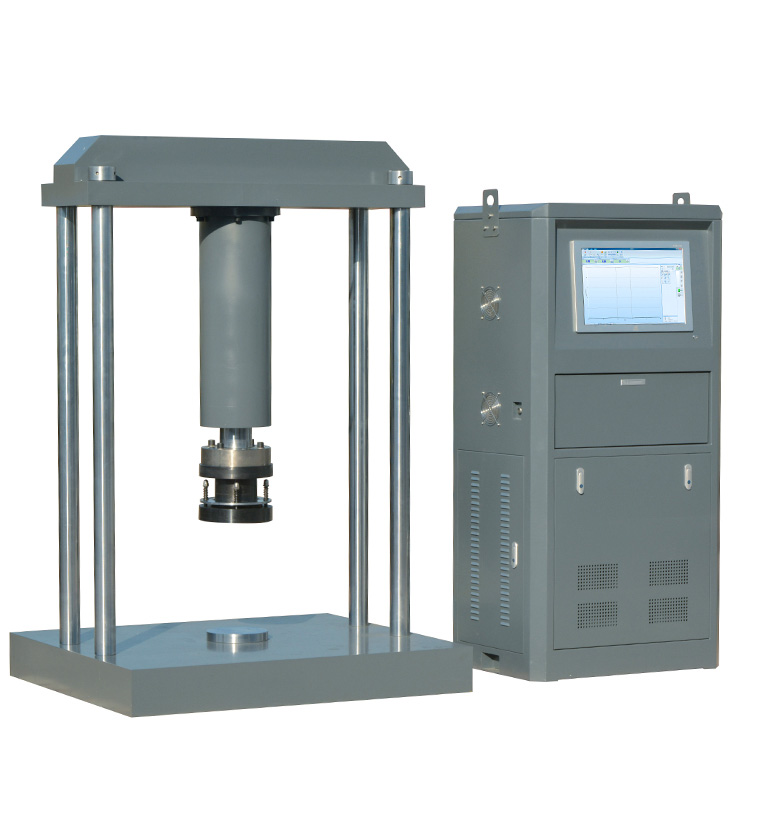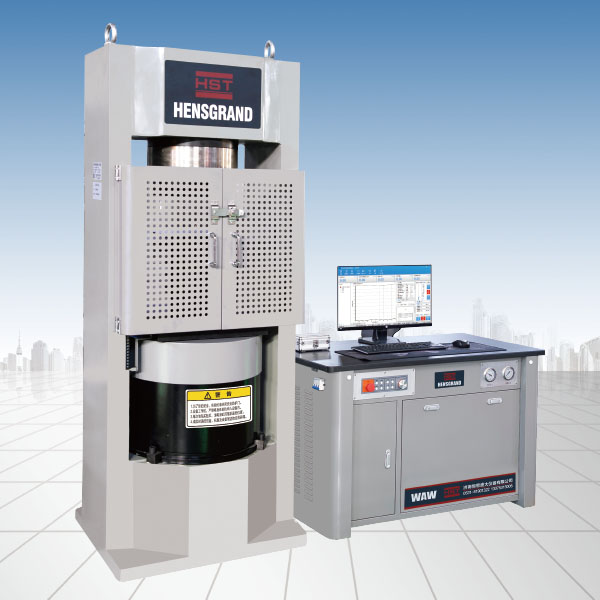Company News
Hengsi Shanda teaches you how to check test machine failures
Release time:2018-11-23 source:Jinan Hengsi Shanda Instrument Co., Ltd. Browse:
How to check for test machine failure? Jinan Hengsi Shanda shares some tips:
1. The oil supply valve has a low stiffness in the pressure-regulating spring or the throttle needle cavity is blocked. Main manifestations: Each load can only reach a certain load. When the load cannot rise again, the oil output of the return oil pipe is large. Exclusion method: Replace the pressure stabilization spring with appropriate stiffness or clean dirt.
2. The gap between the damping needle and the damping hole of the oil supply valve is too small. Main manifestations: Each load can only reach a certain load. When the load cannot rise again, the oil output of the oil return pipe of the oil supply valve is large. Exclusion method: Take out the damping needle and file part of it with a file along the axial direction of the damping needle.
3. The belt that drives the oil pump to loosen and slip. After loading to a certain load, the oil supply valve return pipe does not flow out, and the oil pump does not work sound. Exclusion method: Loosen the motor fixing screws, adjust the position, tighten the belt, and then tighten the motor fixing screws. If the belt is too deformed, a new belt must be replaced.
4. The viscosity of the oil used in the test machine is too low (the oil flows out all the time when loading the oil supply valve returns to the oil pipe). Generally, mineral oil of medium viscosity is used, which does not contain water, acid and other mixtures, does not decompose at room temperature, and does not thicken. If necessary, it can be measured with a viscometer. If the oil is used improperly, it will cause the valve and oil circuit to be blocked and may cause vibration or pipeline leakage. Oil should be used as required in the instructions.
5. The oil leakage in the oil pressure system is severe. The oil leakage in the oil circuit system generally occurs at the connections of the buffer valve, oil return valve, oil supply valve, oil pump and pipelines. Just tighten the screws after adding pads. If the sealing gasket is broken, it must be removed and replaced with a new one. The gaskets should be made of copper or aluminum alloy.
6. The fuel tank oil volume is insufficient. When loaded to a certain load, there will be a "puff" or "puff" sound on the oil return pipe of the oil supply valve, and there will be less oil and bubbles. When the load cannot rise any further, no oil flows out of the return oil pipe. Exclusion method: Recharge oil into the universal tension test engine oil tank until the oil level reaches half of the oil viewing window.
7. The oil collector of the oil pump is not pressed on the pump body. In this way, each load can only reach a certain load, and the load cannot rise any further, and there is no oil flowing out of the oil supply valve return pipe. Exclusion method: Use a wrench to tighten the fixing screws at the rear end of the oil pump. If there is still a problem, remove the oil collector and add a gasket between the oil collector and the pump body.
8. The oil pump plunger is rusted. Main manifestations: During the loading process, the oil output of the oil supply valve return pipe is discontinuous or fluctuates. When a certain load cannot rise, no oil flows out of the return oil pipe. Exclusion method: Remove the plunger and re-polish it.
9. The test machine with a fuse valve can automatically open when the load exceeds 3% to 5%, ensuring that the test machine will not be damaged due to excessive overload. When the safety valve is not adjusted at the time, or the valve tip and hole are not closed tightly, the pressure will not be high. The adjustment method is to remove the safety valve adjustment screws, check the parts damage and replace them. If the overload is too much, rotate the screw downward and vice versa.
10. The matching gap between the working piston and the oil cylinder is too large, and the gap is too oil spilled, which can be seen from the oil spill and other outlets. The method is to thicken the viscosity of the oil. If the problem cannot be solved, after precise measurement, you should go to the manufacturer to replace the piston and oil cylinder.
11. The gap between the force-measuring piston and the force-measuring cylinder is large. When it reaches high tonnage, it can be seen from the lower part of the force-measuring cylinder. Normally, there is no oil drop or intermittent drops when there is high tonnage. If it flows out in a linear shape, it means that the force measuring piston should be replaced. When observing oil leakage, you should pay attention to the difference between oil leakage at the joint and oil leakage at the cylinder plug, and you should not make wrong judgments due to misreading.
12. The piston and piston sleeve in the oil supply valve are damaged or the spring becomes soft. In this way, the load that can be achieved by each load remains basically unchanged, and the oil supply valve is noisy. When the load cannot rise, the oil output of the oil supply valve returns the oil pipe is large. The piston and piston sleeve should be removed and ground. If the damage is serious, the spring should be replaced.
- Previous article:What instruments are required for impact tests
- Next article:Diversified testing functions of rubber tension machines
Recommended productsPRODUCTS























